Your basket is currently empty!

Foraging for dye plants
Summer is abundant with plants and flowers! An invitation to smell blooms on walks, to stare dreamily into the canopy while lying on a meadow – or to forage and dye.
If you are not familiar to gathering wild plants, I would like to introduce you to some things to consider. And at the end of this post you'll see three plants that you are sure to find if you're not located too far from here.
Plants take care of us - plants grow food, medicine, fibers that clothe and warm us, can be a roof over our heads when it rains, and they also contain dyes. Anything one could really ask for. When I remind myself of that, I feel so very grateful. And I want to return this generosity with consideration and respect.
With all the abundance, the forest, the meadow, are not a supermarket - not everything is always available in reliable quantities, and the shelves are not regularly replenished once there empty. In no way does this mean that we should only gaze at wild plants from afar, and look at nature as something we're no part of. Quite the contrary - I recommend to get familiar and immerse oneself.
Do you know your surroundings?
Location is important to consider for foagering. Where are you? You should not collect in protected areas. Different rules may apply in parks and gardens. Especially in places that are frequented by many people, such as inner-city parks, I collect leaves or acorns only when they have fallen to the ground (or after cutting). Are there only a few flowers in one place, or have the very first early blooms awakened? Then insects that collect pollen or nectar have priority.
A nice side effect of getting to know your place, becoming familiar, might be a growing sense of home and groundedness. I feel rooted when observing my surroundings, when I get to know the plants I visit again and again throughout the year.
Get to know the plants
... that you want to pick. There are some poisonous plants, some of which are lookalikes of non-poisonous plants. There are plenty of dye plants, usually you can find good alternatives to poisonous plants.
If you are unsure, take a photo of the plant, then you can have it identified (or try your luck with an identification app). Photos of the location and of the leaves, the stalk, the flower and/or fruit are even better to identify a plant than a branch or a single picked leaf. And the plant can stay put. Field guide books can be helpful, and I'd recommend to join foraging tours or guided walks in your location. Or visit local botanical gardens or herb gardens. Especially smaller, community led ones, often showcase local flora.
But back to foraging: only take it with you if you recognize the plant. And only cut whatever you want to take it with you. Maybe you also know this rule from unenthusiastically mushroom picking as a child?
Of course, there are also rare, protected plants - maybe the probability is (unfortunately) not that great that you will find one. But that's another reason we shouldn't pick any unknown plants.
Are you out and about in the forest or on pristine meadows? From April and throughout summer you should stick to the trails while foraging, especially if you are not that familiar with the place and the wildlife. In order to not disturb ground-breeding birds and other animals. The good news is that there are often remarkably diverse plants along paths and trails anyway!
Some practical foraging guidelines
So, you are not in a protected area, the plants in front of you are not rare. How to proceed now?
Regulations on that topic may differ, but to my surprise the German legal take on foraging is quite clear and easy to understand. There is the so-calledHandstraußregelung“:
Which could be translated as 'bouquet regulation'. "Everyone is allowed to carefully remove and acquire small quantities of wild flowers (...) and branches of wild plants from nature in places that are not subject to entry restrictions for personal use."
Other guidelines by herbalists are: don't take more than you need, and only when there is plenty.
I like this idea that the place you foraged in should pretty much look like before once you're done – with plenty of fruit, seeds, flowers still in place! I only forage wild plants when they're abundant. I prefer to take a little from each plant (depending on the plant it might be a flower, a few twigs or leaves). I'd rather pick the tip and encourage more new growth instead of the entire plant. A friend recently told me, whenever she sees an insect or a bird on a plant she skips it, leaving it to them. On an event by Wildwärts I heard "one part for you, one for the plant, and one for the fairies", which I think is especially good for children to remember!
Give and take
In Braiding Sweetgrass* von Robin Wall Kimmerer (inzwischen auch German* erhältlich) gibt es zur Honorable Harvest, which I'd recommend to read (as the entire book). The author highlights respect and reciprocity, kinship, as guidelines fo foraging, integral to her indigenous heritage. That means, among other things: never take the first and never the last thing you see (i.e. nothing under certain circumstances). The plants take care of us, how can we respectfully reciprocate? Nature is generous, giving - and wherever you are given to, you only take what you can use, you share, you don't steal. A forest, meadow, garden is not the place for greed because there is no shortage. It is also important to ask the plants for permission before harvesting. Which might sound the most unfamiliar as it is so opposed to how many of us are taught to view plants. But something to ponder, and things to un- and relearn?
Personally, I don't harvest roots for dyeing in the wild, so perennials can sprout again. I leave flowers so that they can form seeds. And for stubborn stems, it's good to have scissors or a knife with you to avoid accidentally uprooting entire plants. I collect in cloth bags or paper bags that used to contain fruit or vegetables, to easily transport the plants. And if I remember to, I'll also have a plastic bag with me to collect plastic trash lying around. For a bit of practical reciprocity between me and my environment.
Three dye plants that you can probably find
At the moment I at least see these three plants all the time, on walks in the country side and in the city. These are common plants for my location in Germany, but of course this won't be the same everywhere.
Mugwort, Artemisia vulgaris
... is a traditional medicinal plant that used to be used in a variety of ways. It was also used as a herb in greasy heavy foods to aid digestion. Today mugwort is rarely used for both, so why not test it for dyeing?
Mugwort rather easy to recognize by its pinnate leaves with the typical silver-gray underside.
I harvested it for dyeing just before it bloomed. But if you're allergic to mugwort, as many are, you might just leave this plant alone. I harvested my mugwort bouquet from the side of the road, on the way to our little garden. Road sides are where you can see it very often, also on fallow land, at construction sites and in parks that are not constantly mowed.
I walked down the street for a bit, with scissors the cut the firm stems, and harvested only a few tips from each plant along the way. And I already spied a lot of goldenrod, which will also soon bloom throughout the city.
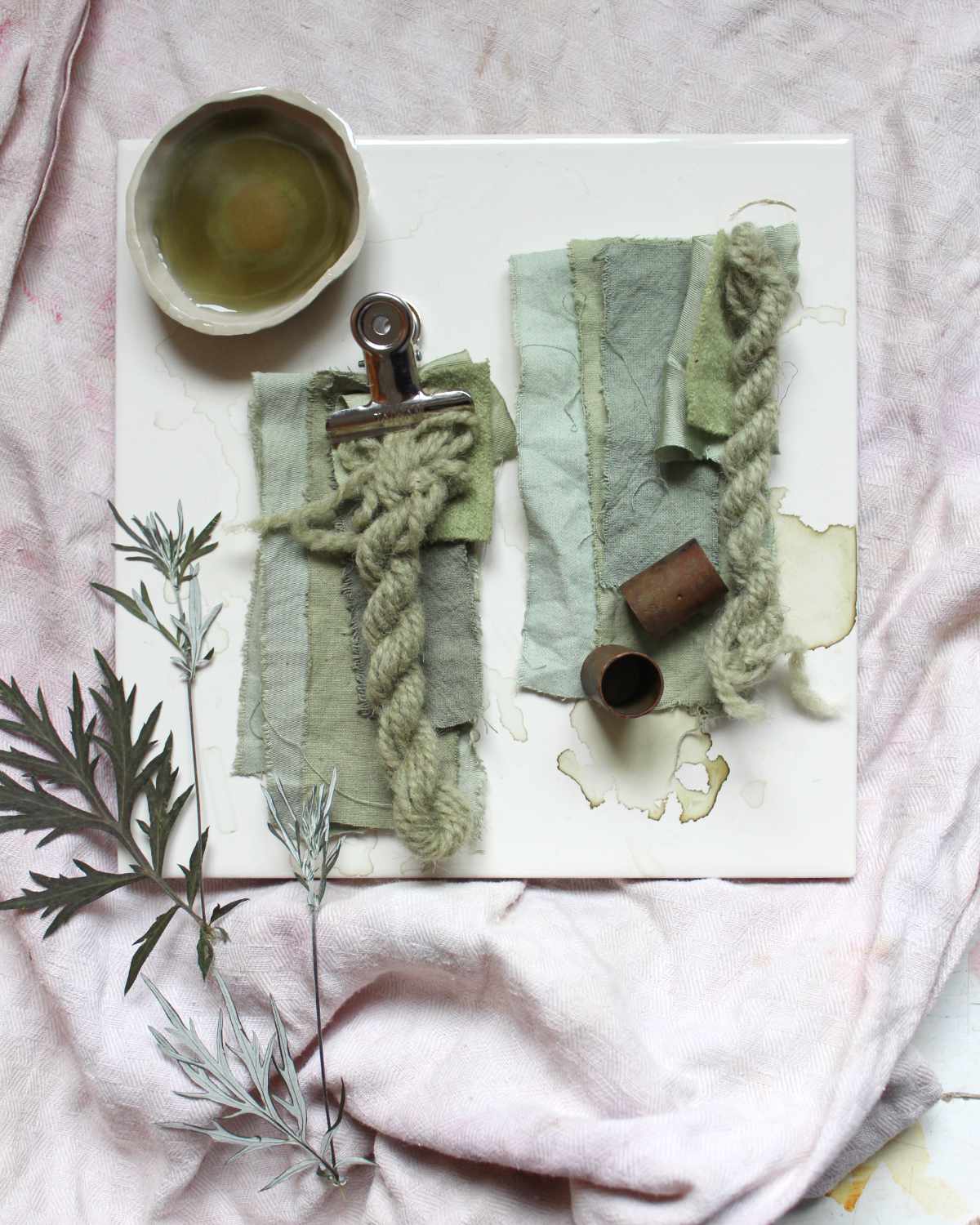
Canadian goldenrod, Solidago canadensis
You can read even more on this plant in a previous post. It is definitely one of the dye plants that grow abundantly here, and like mugwort goldenrod is also a medicinal plant. You can use both leaves and flowers for dyeing. I especially like to harvest the flower stalks with the upper leaves before the buds open.
If you look closely, you can spot goldenrod everywhere even now, in mid-July. But once it blooms in late summer, it really can't be missed with its bright yellow flowers!
In some areas there is even a recommendation to remove this plant, as it can spread a lot with its rhizomes. It can crowd out other plants in certain biotopes, and so Canadian goldenrod, once introduced as an ornamental plant, often does not have the best reputation.
In my alotment, goldenrod it is allowed to grow. I harvest some of it, and remove plants where they take over. I then dye with them, or even make myself a tea. And otherwise I enjoy the flowers, and the droves of insects that they attract.
So, maybe there are actions in your area to remove goldenrod in specially protected landscapes? There you could harvest to your heart's content. But unless this is specified: the same rules apply to goldenrod as to other wild plants. But you can surely fill a dye pot with this plant, as abundant as it tends to grow.
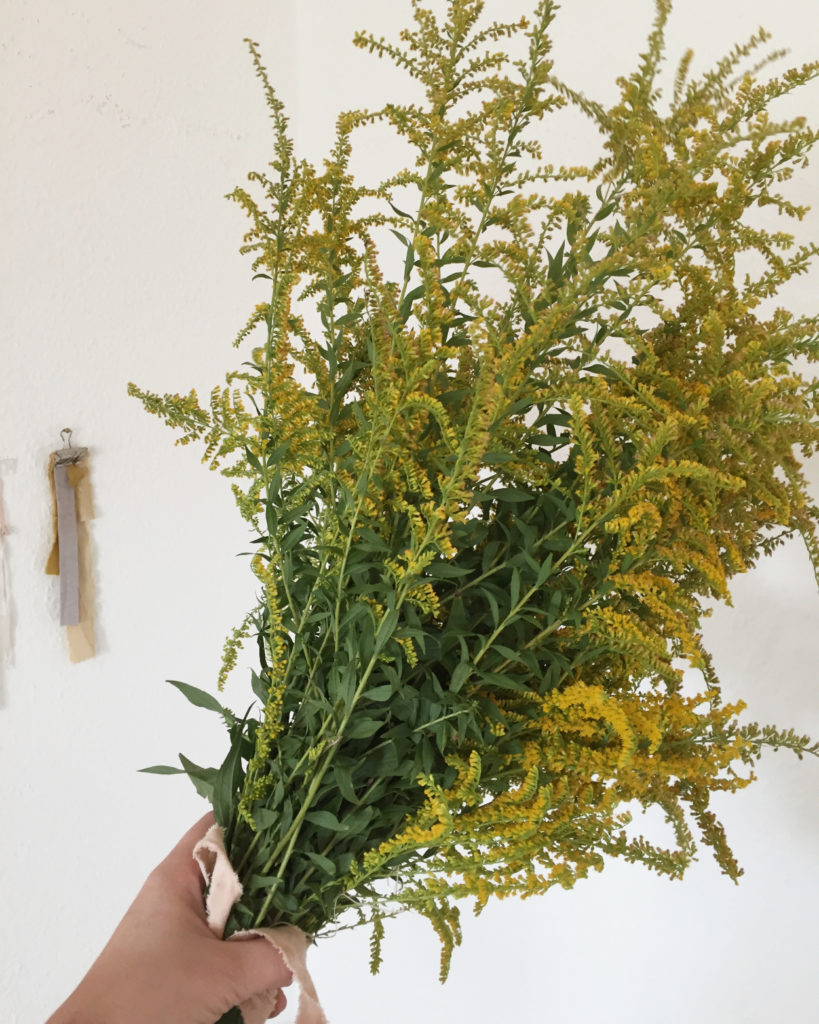
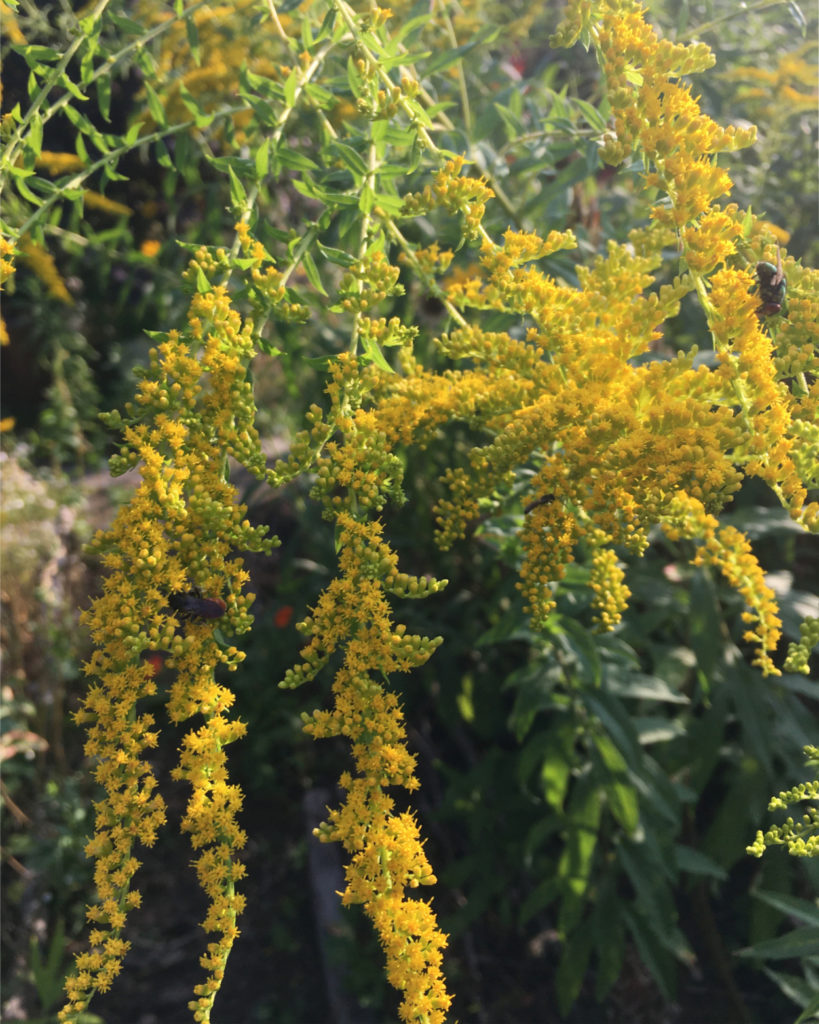

Wild carrot, Daucus carota
I love the delicate flowers of Wild carrot, or Queen Anne's Lace, and so usually I do not pick any of them. Instead I use the green tops of my garden carrots – with both you can dye beautiful yellows.
But this year I have seen them in such large quantities that I could have picked a bouquet after all.
And Wild carrot is well suited even for beginner foragers because, unlike many other umbellifers, it can be clearly identified. There are some poisonous plants in this family, and many umbellifers (or apiaceae) do look quite similar. For example, cow parsely, as a non-poisonous dye plant, is very easy to mix up with the poisonous rough chervil or the very poisonous hemlock.
So, Wild carrot can be identified by the shape of its inflorescences, which look like fine, dense nests or an inverted lace cap (hence the name Queen Anne's lace, I assume). And you can look for the biggest of it's flower stalks - it should have a red (sometimes pink) or almost black flower in the middle of all the tiny white flowers. None of the poisonous umbellifers in our area have a similar "dot" in the centre of their flower clusters. For dyeing you can harvest both inflorescence and leaves.
Finally: All information is given to the best of my knowledge and belief. You should not collect or dye unknown plants. I accept no liability for any negative consequences.
*Wenn du ein Buch über den Link kaufst, bekomme ich eine kleine Provision von meinem Partner buch7.de, der Preis für dich bleibt gleich. Die Bestellung über den sozialen Buchhandel buch7.de unterstützt soziale, kulturelle und ökologische Projekte.
Außer Färbepflanzen gibt es auch noch Pilze, mit denen man färben kann!
-
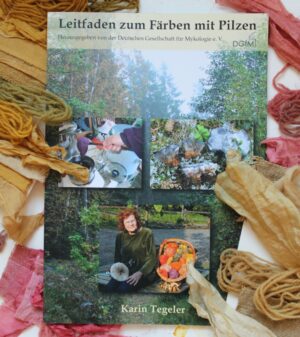 Leitfaden Färben mit Pilzen18,00€ inkl. MwSt.
Leitfaden Färben mit Pilzen18,00€ inkl. MwSt.incl. VAT
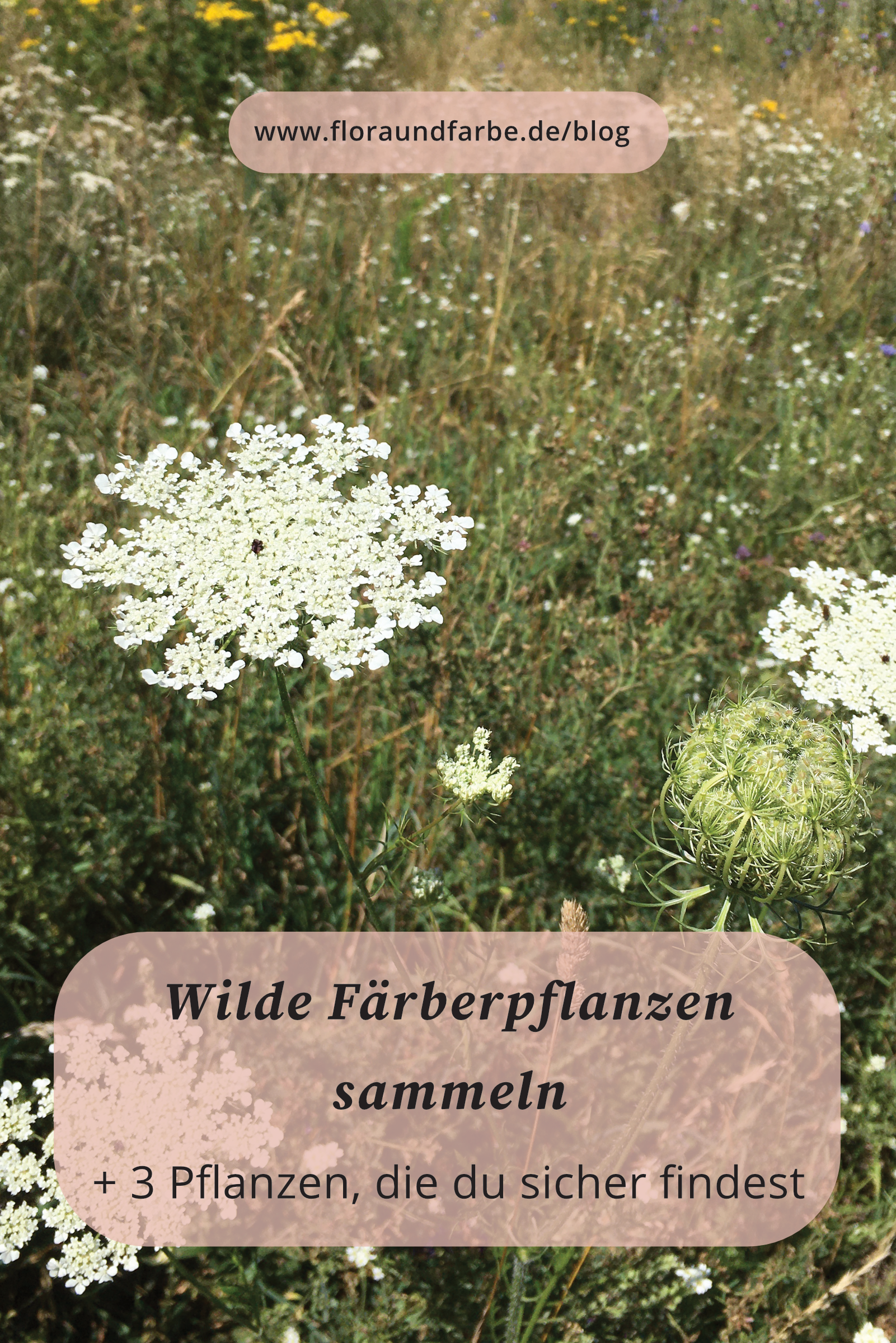
Leave a Reply